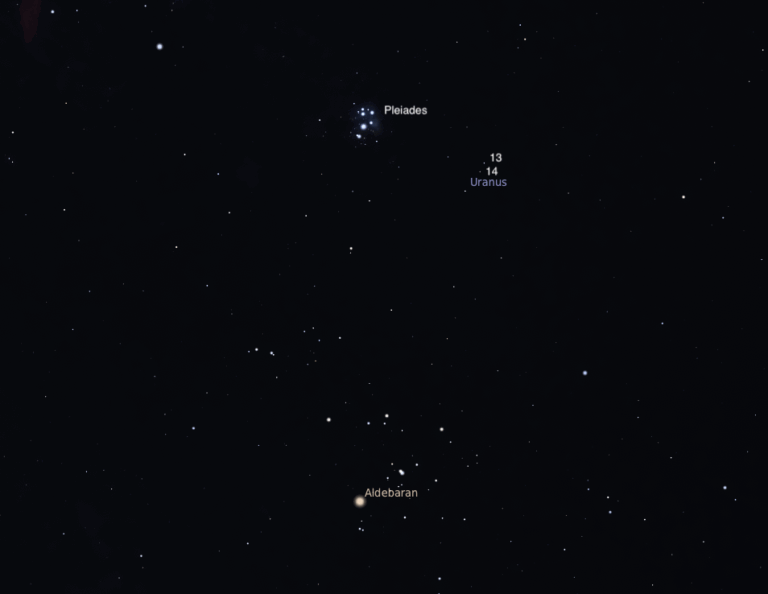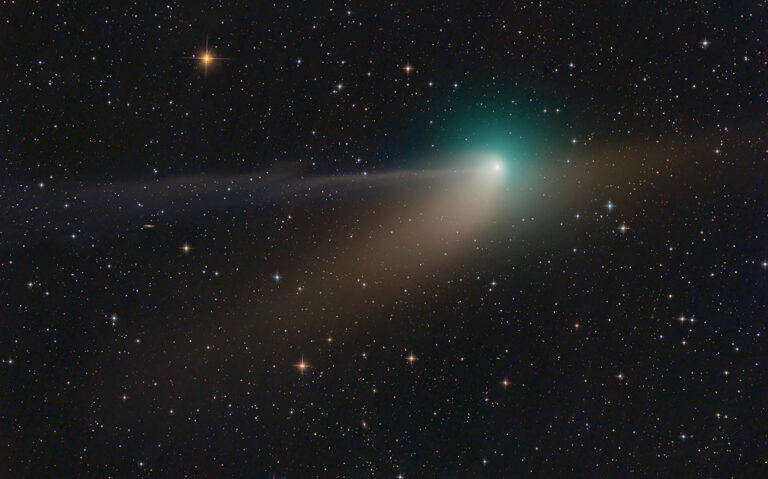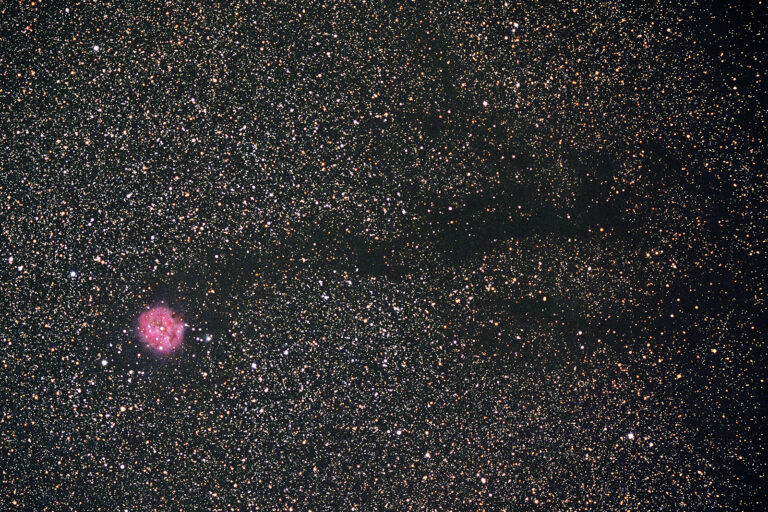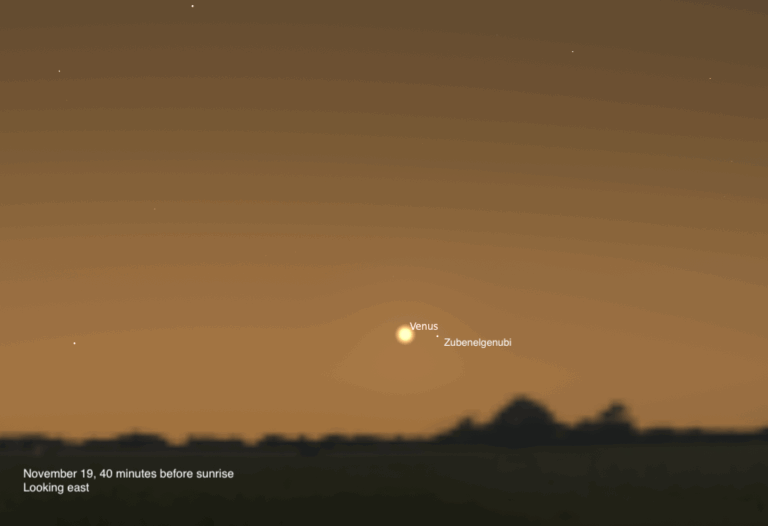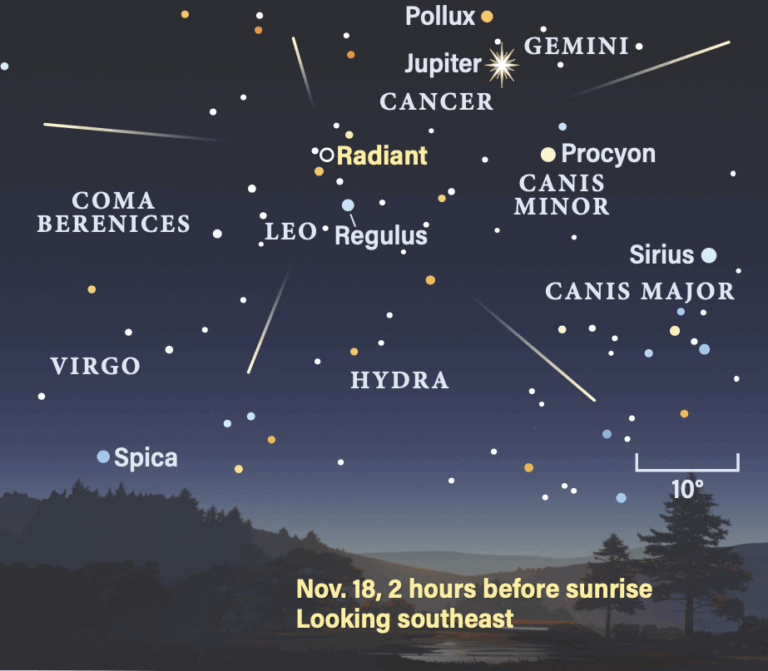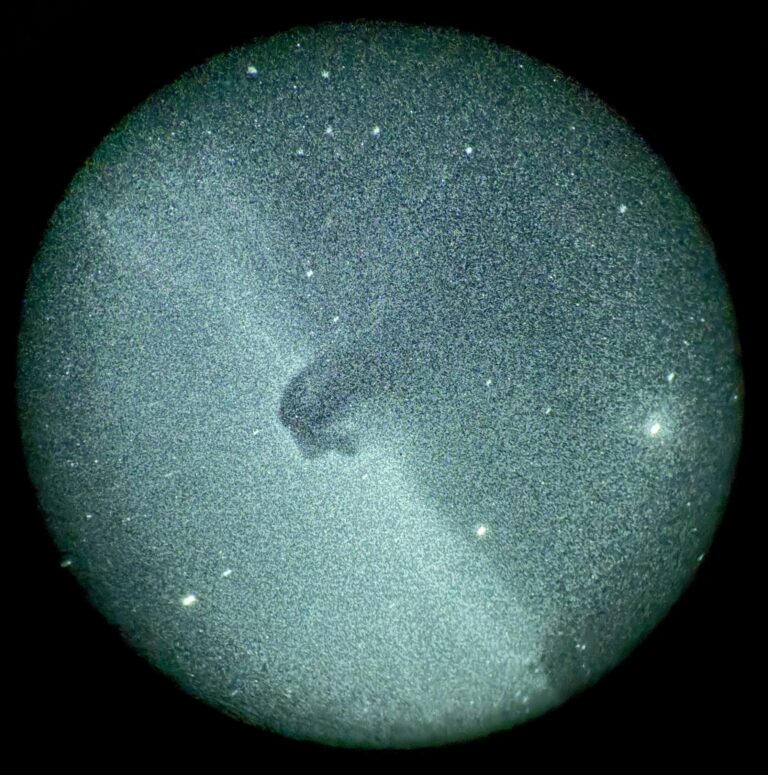
Key Takeaways:
- On November 20, Callisto will begin a transit across the disk of Jupiter at 5:53 A.M. EST.
- Uranus will reach opposition on November 20 at 7 A.M. EST, presenting the optimal viewing period for the ice giant within the constellation Taurus.
- To locate Uranus (magnitude 5.6), observers should aim approximately 4.3° south of the Pleiades (M45), where it forms an east-west alignment with the stars 13 and 14 Tauri.
- Through telescopic observation, Uranus may appear as a 4-arcsecond, circular disk exhibiting a grayish coloration.
Looking for a sky event this week? Check out our full Sky This Week column.
November 20: Io and Callisto cross Jupiter
The morning begins with Callisto transiting the disk of Jupiter, starting at 5:53 A.M. EST. The moon crosses onto the eastern limb and begins to transit from east to west. Observers across the U.S. will be able to catch the transit’s start, though the Sun will rise with Callisto still crossing the disk.
Uranus reaches opposition at 7 A.M. EST. Now is the best time to see the distant ice giant, floating among the stars of Taurus.
At opposition, planets rise around sunset and set around sunrise. Because Uranus is faint (magnitude 5.6), you’ll want to give it time to climb above the hazier air near the horizon. By 8 P.M. local time, Uranus is nearly 40° high in the east, located to the lower right of the easy-to-find Pleiades star cluster (M45).
Pull out binoculars or any telescope and center on the Pleiades. From there, move about 4.3° south (to the lower right) and look for a pair of 6th-magnitude stars side by side: these are 13 and 14 Tauri. Uranus currently forms an east-west line with these stars, standing about 0.9° east of the easternmost star in the pair (slightly fainter 14 Tau). At magnitude 5.6, Uranus is brighter than 14 Tau and roughly the same brightness as 13 Tau, sandwiching the fainter star between them.
In a telescope, you may be able to discern the planet’s 4”-wide disk, which will look like a tiny, circular, “flat” star that shows off a grayish hue.
Sunrise: 6:52 A.M.
Sunset: 4:39 P.M.
Moonrise: 8:28 A.M.
Moonset: 5:16 P.M.
Moon Phase: Waxing crescent (3%)
*Times for sunrise, sunset, moonrise, and moonset are given in local time from 40° N 90° W. The Moon’s illumination is given at 10 P.M. local time from the same location.

